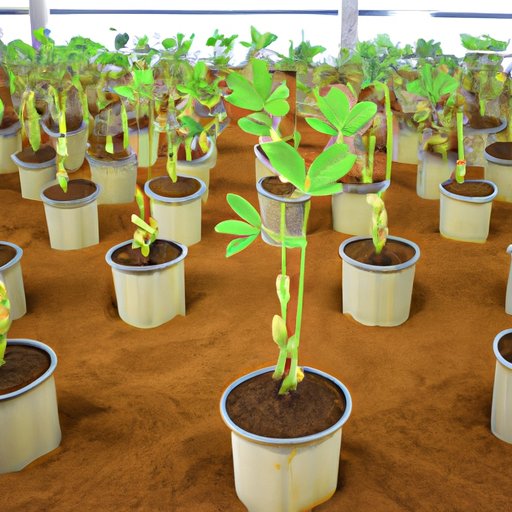
Introduction
Are you interested in growing peanuts but don’t know where to start? Look no further! In this comprehensive guide, we will cover everything you need to know about growing peanuts. From conducting research to harvesting, we’ve got you covered.
Research
Before starting any gardening project, it’s important to conduct research to ensure success. When it comes to peanuts, several factors must be considered, including climate, soil, water, and fertilizers. Take some time to research these factors and the specific requirements for growing peanuts in your area. You can find valuable information online or by reaching out to your local agriculture extension office, which is an excellent resource for farmers and gardeners alike.
Choose a Site
Choosing the right site for growing peanuts is crucial for their growth and quality. Peanut plants need plenty of sunlight, water, and fertile soil to thrive. When selecting a site, look for an area that receives full sunlight and has well-draining, fertile soil. Avoid areas with poor drainage and standing water, as peanut plants are susceptible to root rot.
It’s also essential to consider the location’s proximity to a water source. Peanut plants require regular watering, especially during dry spells, so it’s crucial to choose a site close to a water source.
Soil Preparation
Preparing the soil for planting is crucial for the peanut plant’s successful growth. Peanut plants require well-draining, fertile soil. Before planting, add organic matter, such as compost or aged manure, to improve the soil’s fertility. Additionally, remove any debris and rocks from the planting area to ensure the soil is loose and easy to work with.
Planting
Planting peanuts requires the correct timing and technique. Peanuts should be planted in the spring, after the risk of frost has passed, and soil temperatures have reached at least 65°F. Plant the seedlings about 2 inches deep and 6 inches apart with rows that are 3 feet apart.
Fertilization is essential for promoting healthy plant growth. Use a balanced fertilizer high in nitrogen and potassium, such as 10-10-10, to fertilize peanut plants. Apply fertilizer before planting and again during the plants’ active growth phase, usually about four weeks after planting.
Maintenance
To ensure healthy plant growth, peanuts require maintenance. Regular watering, weeding, and pruning are key components of maintaining healthy peanut plants. Water the plants regularly, especially during dry spells, to ensure they receive sufficient moisture.
Weeding is essential for ensuring that peanut plants receive adequate nutrients and water. Remove any weeds from the planting area to prevent them from competing with the peanut plants for resources.
Pruning is also vital for promoting healthy plant growth. Prune away any yellow or brown leaves from the peanut plant regularly, as they can cause insect infestations or the development of fungal diseases.
Harvest
Harvesting peanuts requires careful attention. Peanut plants are ready for harvest when the leaves and stems turn yellow. At this point, use a spade or garden fork to carefully dig up the entire plant. After that, shake off the soil, and let the plants dry in the sun for a few days.
Once the peanut plants have dried, it’s time to remove the peanuts from the shells. Carefully remove the shells to avoid damaging the peanuts, and thoroughly clean them before using or selling them.
Storage and Usage
After harvesting, it’s essential to store peanuts properly to preserve their freshness. Keep them in a cool, dry location to prevent them from becoming moldy or rancid.
There are many ways to use peanuts, from making roasted snacks to peanut butter and oil. Consider roasting peanuts or grinding them into peanut butter or oil for cooking and baking. Additionally, peanuts are a great source of protein and healthy fats, making them a nutritious addition to any diet.
Conclusion
In conclusion, growing peanuts can be a fun and rewarding gardening project. Before getting started, conduct thorough research on the specific requirements for growing peanuts in your area. Choose a site with plenty of sunlight, water, and fertile soil and prepare the soil correctly before planting. Maintain healthy peanut plants by regularly watering, weeding, and pruning, and harvest them carefully when ready. Lastly, store them properly to ensure they stay fresh and consider using them in various ways for maximum benefits.




